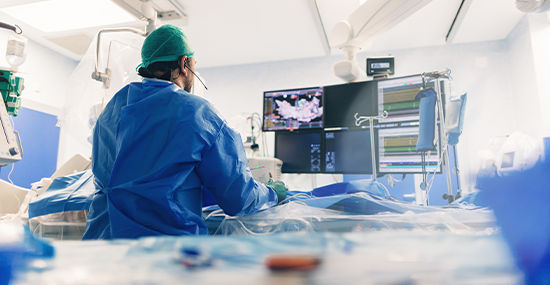The University Hospital of Sharjah has a volley of experts specializing in Interventional Radiology (IR). IR comes with a range of techniques that rely on the use of radiological image guidance such as - X-ray fluoroscopy, ultrasound, computed tomography [CT] or magnetic resonance imaging [MRI]) etc. The departments caters to vascular and non-vascular procedures, venous interventions including varicose vein management, Neuro-interventional Procedures, Cross-sectional body imaging including Gastrointestinal and Radio- oncology and other Gynecology interventional procedures.
Department Icon
List of services
Department Image


